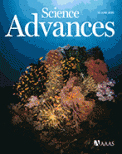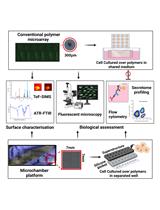- EN - English
- CN - 中文
In vitro STING Activation with the cGAMP-STINGΔTM Signaling Complex
cGAMP-STINGΔTM信号复合物体外激活STING
发布: 2021年02月05日第11卷第3期 DOI: 10.21769/BioProtoc.3905 浏览次数: 5904
评审: Shyam SrivatsAnand Ravindran

相关实验方案
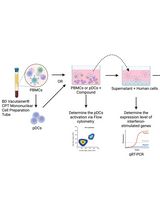
基于人外周血单个核细胞(PBMCs)和浆细胞样树突细胞(pDCs)的宿主靶向抗病毒药物(HTA)筛选方案
Zhao Xuan Low [...] Pouya Hassandarvish
2025年03月05日 2494 阅读
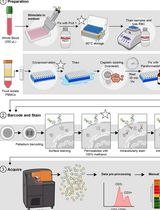
用于比较人冷冻保存 PBMC 与全血中 JAK/STAT 信号通路的双磷酸化 CyTOF 流程
Ilyssa E. Ramos [...] James M. Cherry
2025年11月20日 977 阅读
Abstract
Activating the STING (stimulator of interferon genes) signaling pathway via administration of STING agonist cyclic GMP-AMP (cGAMP) has shown great promise in cancer immunotherapy. While state-of-the-art approaches have predominantly focused on the encapsulation of cGAMP into liposomes or polymersomes for cellular delivery, we discovered that the recombinant STING protein lacking the transmembrane domain (STINGΔTM) could be used as a functional carrier for cGAMP delivery and elicit type I IFN expression in STING-deficient cell lines. Using this approach, we generated anti-tumoral immunity in mouse melanoma and colon cancer models, providing a potential translatable platform for STING agonist-based immunotherapy. Here, we report the detailed in vitro STING activation protocols with cGAMP-STINGΔTM complex to assist researchers in further development of this approach. This protocol can also be easily expanded to other applications related to STING activation, such as control of various types of infections.
Keywords: STING pathway (干扰素基因的刺激因子通路)Background
Over the past two decades, the STING (stimulator of interferon genes) signaling pathway has emerged as a crucial feature of the immune system and a promising therapeutic target against viral and bacterial infections, autoimmune disorders, and cancers. As such, the delivery of STING agonists to boost the immune response has become an area of great interest in both academic institutions and pharmaceutical companies (Ohkuri et al., 2017). While existing efforts have focused mostly on developing synthetic delivery vehicles (Shae et al., 2019), this assumes the presence of fully functional STING in cells. STING signaling has not only been shown to be frequently impaired in cancer cells due to epigenetic silencing of the protein (Ahn et al., 2015; Xia et al., 2016); there is also an ongoing debate on whether the general population is responsive to agonist-only therapies, since 19% of humans carry a mutated STING variant (R71H-G230A-R293Q, HAQ STING) reported to exhibit impaired function (Jin et al., 2011; Fu et al., 2015; Patel et al., 2017; Sivick et al., 2017).
To address these concerns, we engineered a truncated portion of the original STING protein to pre-assemble with STING agonists, acting as a functional carrier that can effectively trigger STING signaling even in the absence of STING proteins in mammalian cells. Our in vivo vaccination studies with this platform has shown efficient activation of B cells, cytotoxic T cells and memory precursor T cells, as well as robust anti-tumoral immunity against melanoma and colon cancer mouse models (He et al., 2020).
Here, we report the detailed protocols of our in vitro STING activation assays (Table 1) with cGAMP-STINGΔTM ribonucleoprotein complex in three cell lines: human embryonic kidney (HEK293T) cell, mouse macrophage (RAW264.7) and mouse dendritic cell (DC2.4). The purification protocol of STINGΔTM is also included to ensure the reproducibility of our work. We believe this protocol may assist further mechanistic discoveries in the signaling pathway and more engineering applications of this platform in vaccinology and cancer immunotherapy.
Table 1. Summary of in vitro STING activation assays
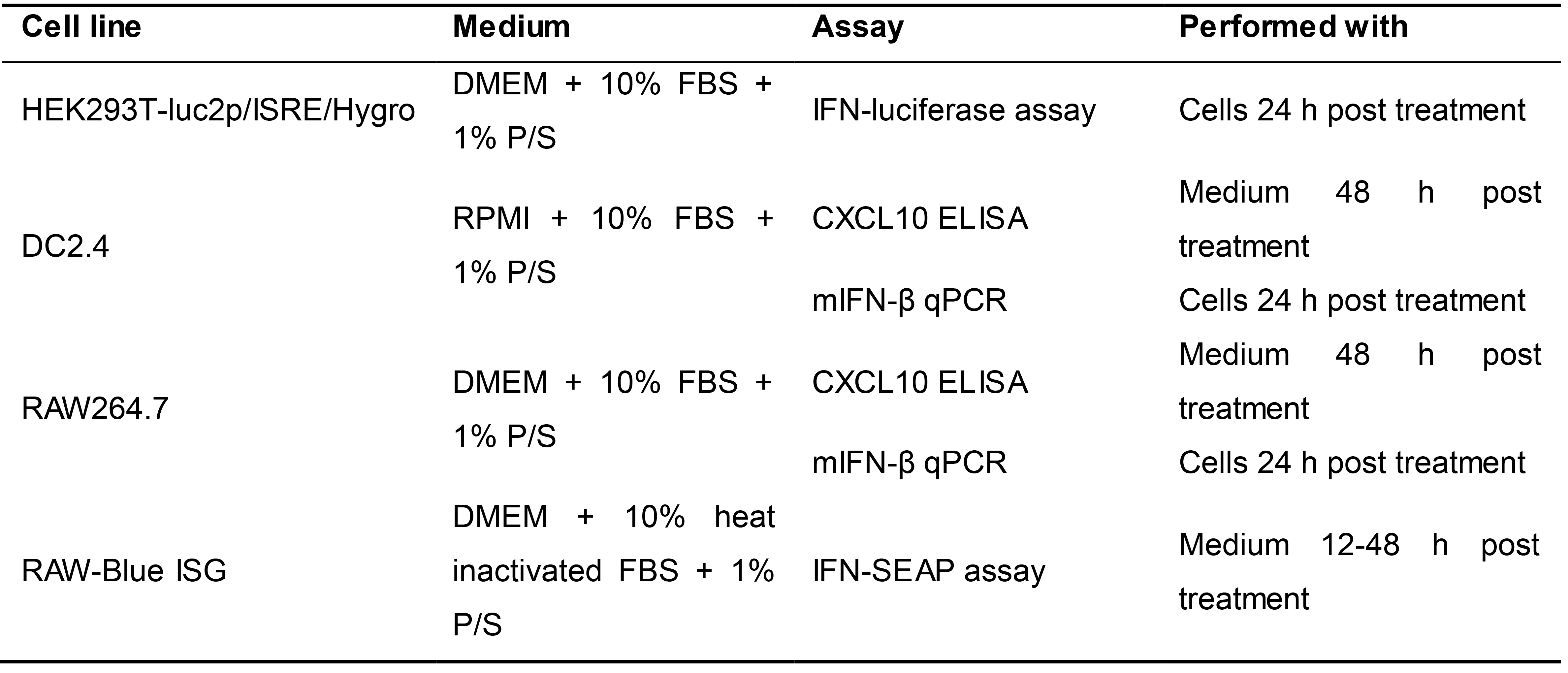
Materials and Reagents
Protein Purification
Poly-Prep chromatography column (Bio-Rad, catalog number: 7311550 )
ZebaTM Spin Desalting Columns 40k MWCO 10 ml (Thermo Fisher Scientific, catalog number: 87772 )
BL21 (DE3) competent E. coli (NEB, catalog number: C2527I )
RosettaTM (DE3) competent E. coli (Millipore Sigma, catalog number: 70954 )
Isopropyl-β-D-thiogalactopyranoside (IPTG, Millipore Sigma, catalog number: I6758-10G )
Phosphate Buffered Saline (PBS, Lonza, catalog number: 17-516F )
Imidazole (Millipore Sigma, catalog number: I5513 )
Lysozyme from chicken egg white (Millipore Sigma, catalog number: 62971-10G-F )
TritonTM X-100 (Millipore Sigma, catalog number: T8787-250ml )
TritonTM X-114 (Millipore Sigma, catalog number: 93422-250ml )
Phenylmethylsulfonyl fluoride (PMSF, Millipore Sigma, catalog number: P7626-5G )
cOmpleteTM Mini, EDTA free (Roche, catalog number: 11836170001 )
Bovine Serum Albumin (BSA, Millipore Sigma, catalog number: A3608 )
HisPurTM Cobalt Resin (Thermo Fisher Scientific, catalog number: 89964 )
1,4-Dithiothreitol (DTT, Millipore Sigma, catalog number: 10197777001 )
Sodium Phosphate Monobasic (Millipore Sigma, catalog number: S3139 )
Sodium Phosphate Dibasic (Millipore Sigma, catalog number: S3264 )
Sodium Chloride (Millipore Sigma, catalog number: S9888 )
HEPES (Millipore Sigma, catalog number: H3375 )
Glycerol (Millipore Sigma, catalog number: G5516 )
Protein Binding Buffer (see Recipes)
Protein Elution Buffer (see Recipes)
Protein Storage Buffer (see Recipes)
HEK293T and RAW264.7 cells were obtained from the American Type Culture Collection (ATCC)
DC2.4 cells were obtained from Rock lab, University of Massachusetts Medical School, MA, USA
RAW-Blue ISG cells were obtained from Invivogen
Dulbecco’s modified Eagle’s medium (DMEM, Corning, catalog number: 10-041-CV )
Roswell Park Memorial Institute (RPMI) medium (Corning, catalog number: 10-013-CV )
0.25% Trypsin-EDTA (Gibco, catalog number: 25200-056 )
Fetal bovine serum (FBS, Gibco, catalog number: 10437-028 )
Penicillin-Streptomycin Solution, 100x (Corning, catalog number: 30-002-CI )
96-well clear bottom white plate (Millipore Sigma, catalog number: CLS3610 )
pGL4.45[luc2p/ISRE/Hygro] Vector (Promega)
Firefly Luciferase Assay Kit (Biotium, catalog number: 30075-2 )
TransIT-X2® Transfection Reagent (Mirus, catalog number: MIR 6004 )
LightCyclerTM 480 Multiwell Plate 96 clear with Sealing Foils (Roche, catalog number: 05102413001)
RNeasyTM micro kit (Qiagen, catalog number: 74004 )
Beta-Mercaptoethanol (βME, Millipore Sigma, catalog number: M6250-10ML )
Reverse transcription kit (Thermo Fisher Scientific, catalog number: 4374966 )
SYBRTM Green PCR Master Mix (Thermo Fisher Scientific, catalog number: 4309155 )
qPCR primers used for detection: mIFN-β-F: 5’-GCCTTTGCCATCCAAGAGATGC-3’, mIFN-β-R: 5’-ACACTGTCTGCTGGTGGAGTTC-3’, mActin-F: 5’-CATTGCTGACAGGATGCAGAAGG-3’, and mActin-R: 5’-TGCTGGAAGGTGGACAGTGAGG-3’ (ordered from IDT as custom oligo DNA)
Greiner Bio-One MICROLONTM 600 High Binding 96-Well ELISA Assay Microplates (Fisher Scientific, catalog number: 07-000-627 )
Mouse CXCL10 ELISA kit (R&D, catalog number: DY466 )
TMB Substrate Set (BioLegend, catalog number: 421101 )
TWEEN 20 (Millipore Sigma, catalog number: P9416-100ml )
QUANTI-BlueTM Solution (Invivogen, catalog code: rep-qbs )
Equipment
Misonix sonicator 3000
Real-time PCR system (Roche, model: LightCycler 480 )
Nanodrop spectrophotometer (Thermo Fisher, model: ND-1000 )
Thermal cycler (Bio-Rad, model: T100 )
Plate reader (Tecan, model: Infinite M200 )
Software
GraphPad Prism
Procedure
文章信息
版权信息
© 2021 The Authors; exclusive licensee Bio-protocol LLC.
如何引用
Readers should cite both the Bio-protocol article and the original research article where this protocol was used:
- He, Y., Hong, C., Irvine, D. J., Li, J. and Hammond, P. T. (2021). In vitro STING Activation with the cGAMP-STINGΔTM Signaling Complex. Bio-protocol 11(3): e3905. DOI: 10.21769/BioProtoc.3905.
- He, Y., Hong, C., Yan, E. Z., Fletcher, S. J., Zhu, G., Yang, M., Li, Y., Sun, X., Irvine, D. J. and Li, J. (2020). Self-assembled cGAMP-STINGΔTM signaling complex as a bioinspired platform for cGAMP delivery. Sci Adv 6(24): eaba7589.
分类
免疫学 > 免疫细胞功能 > 细胞因子
细胞生物学 > 细胞信号传导
癌症生物学 > 肿瘤免疫学 > 细胞生物学试验
您对这篇实验方法有问题吗?
在此处发布您的问题,我们将邀请本文作者来回答。同时,我们会将您的问题发布到Bio-protocol Exchange,以便寻求社区成员的帮助。
提问指南
+ 问题描述
写下详细的问题描述,包括所有有助于他人回答您问题的信息(例如实验过程、条件和相关图像等)。
Share
Bluesky
X
Copy link


